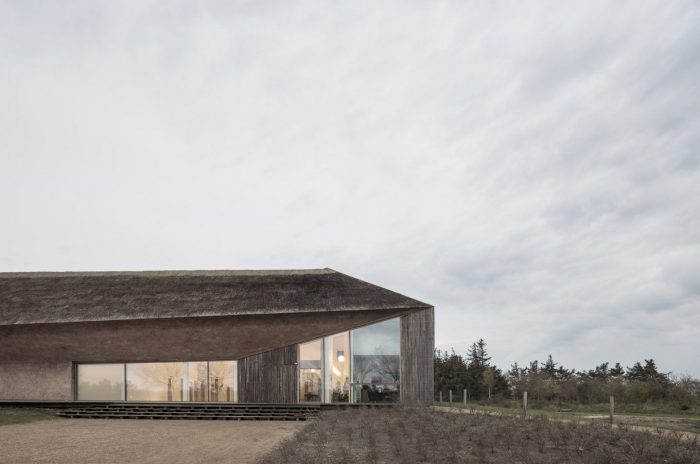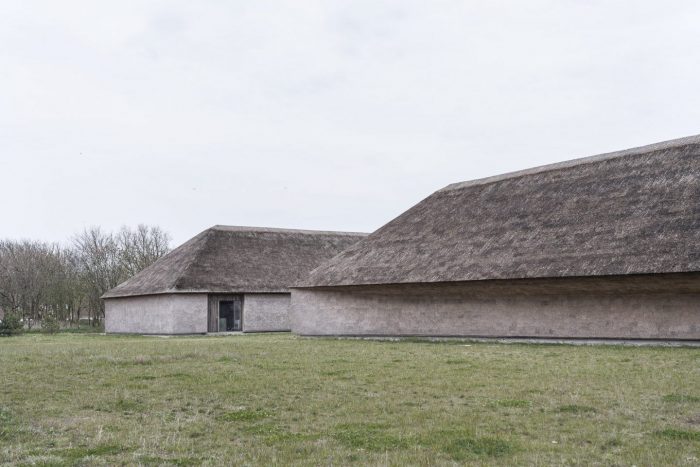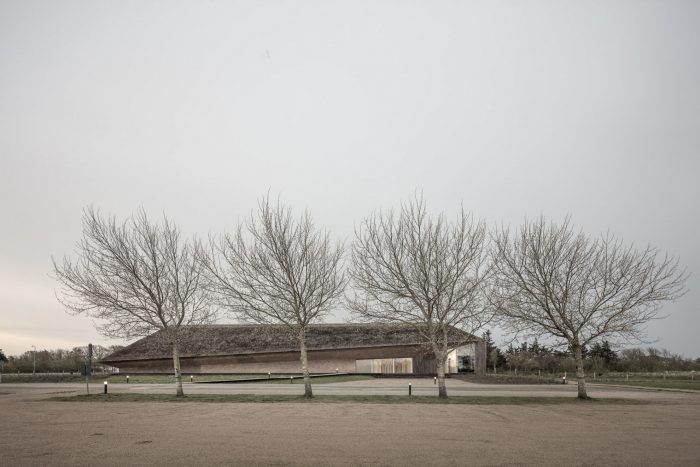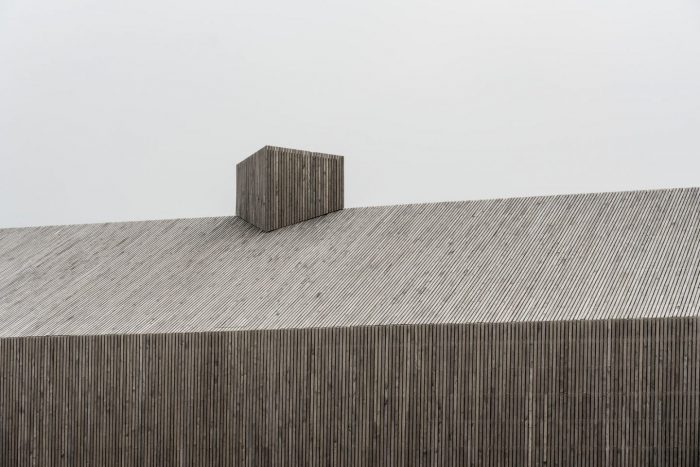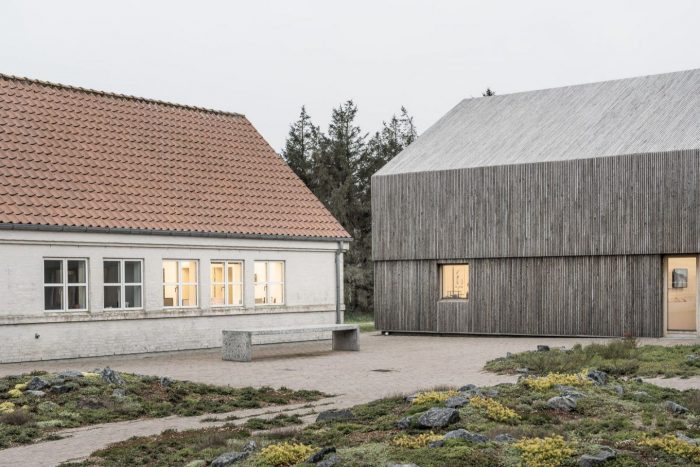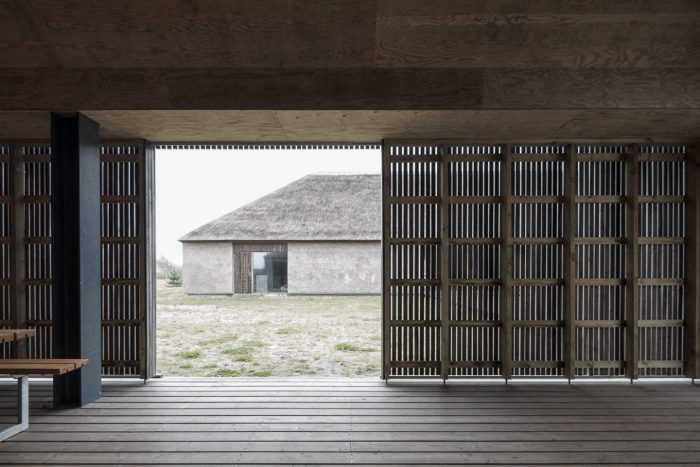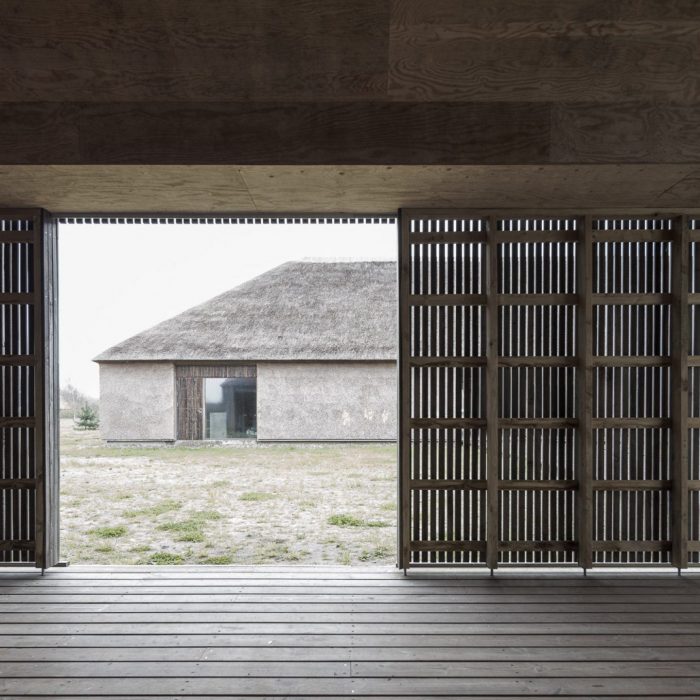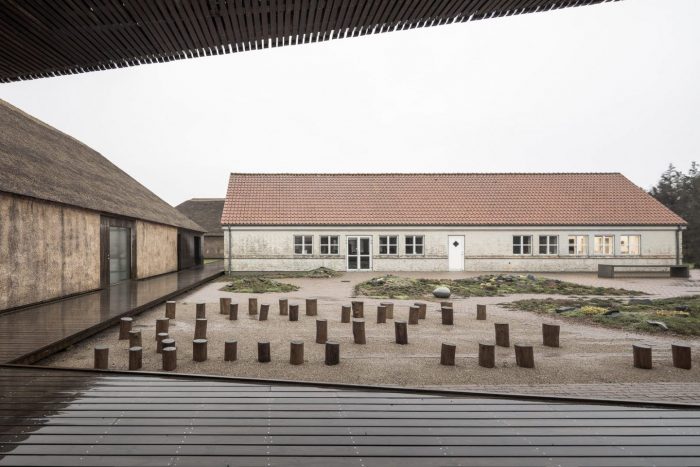瓦登海形成于12000年前的冰河时代末期,是日德兰半岛南部一个500公里长的沿海地区,这里的沼泽地和历史交汇在一起。丹麦建筑师Dorte Mandrup在联合国教科文组织指定的世界遗产遗址——丹麦最大的国家公园中设计了“瓦德登海洋中心”。
在项目描述中,曼德拉普的公司指出,“几乎不可能不受这一古老自然景观的启发”,这就是为什么他们决定设计“一种向瓦德登海地区的材料和传统工艺致敬的建筑”。“教育中心在形式和建筑上都借鉴了当地的风俗,借鉴了传统农舍的布局,并在建筑中使用了当地的材料。Mandrup解释说,教育中心是“雕塑式的,嵌入到环境中”。它的有机形式被设计成“仿佛从地下冒出来一样”。这些照片由意大利视觉艺术家奥尔多•阿莫雷蒂拍摄,他的镜头完美地勾勒出中心起伏的形状。
Formed at the end of the ice age 12,000 years ago, the Wadden Sea is a 500-kilometer long coastal area in southern Jutland where marshland and history meet. On the designated UNESCO world heritage site that is Denmark’s largest national park, Danish architect Dorte Mandrup has designed the ‘Wadden Sea Centre’.
In a project description, Mandrup’s firm notes that it is “virtually impossible not to be inspired by this ancient natural scenery”, which is why they determined to design “a one of a kind building that pays homage to the regional material and traditional craftsmanship of the Wadden Sea.” The education center they have created references regional vernacular in both form and construction, drawing upon the layout of traditional farmhouses and utilizing locally sourced materials in construction. The education center is “sculptural and embedded into the environment”, Mandrup explains. Its organic form designed to appear “as though it has emerged from the ground”. The photographs featured were captured by Italian visual artist Aldo Amoretti, whose lens has perfectly framed the undulating form of the center.
Design: Dorte Mandrup
Project: Wadden Sea Centre
Photography: Aldo Amoretti



